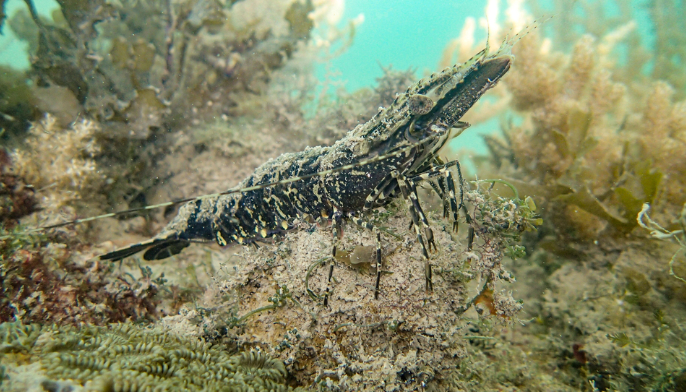The Biggest Shrimp in the World- Free Job Alert

Shrimp, a favorite delicacy around the globe, comes in various sizes and types, each with its unique taste and texture. Among these, one species stands out not only for its size but also for its culinary value and ecological importance. Meet the Giant Tiger Prawn, also known as Penaeus monodon, the biggest shrimp in the world.
The Giant Tiger Prawn: An Overview
The Giant Tiger Prawn, a native of the Indo-Pacific region, is renowned for its impressive size and distinctive stripes. These prawns can grow up to 14 inches (35 cm) in length and weigh as much as 1 pound (450 grams), making them the largest species of shrimp known to science. Their striking appearance, characterized by blue and black stripes on their bodies, is as remarkable as their size.
Habitat and Distribution
The Giant Tiger Prawn thrives in the warm waters of the Indian and Pacific Oceans. They are typically found in coastal regions, estuaries, and mangrove areas where they can find ample food and shelter. Their adaptability to various environmental conditions has also led to their introduction and cultivation in other parts of the world, including Southeast Asia, Australia, and even parts of Africa.
Life Cycle and Growth
The life cycle of the Giant Tiger Prawn is a fascinating journey from egg to adulthood. The female prawn can lay between 500,000 to 1 million eggs in a single spawning event. These eggs hatch into larvae, which undergo several developmental stages before becoming juveniles and eventually adult prawns. The entire process, from hatching to reaching full size, can take up to 18 months.
Culinary Delight
Giant Tiger Prawns are a prized catch in the culinary world. Their large size and firm texture make them ideal for a variety of cooking methods, including grilling, boiling, and frying. Their sweet, succulent meat is highly sought after in many cuisines, particularly in Asian countries where seafood is a staple.
Popular Recipes
Grilled Giant Tiger Prawns
Marinated in garlic, lemon juice, and herbs, then grilled to perfection, these prawns are a mouthwatering treat.
Shrimp Tempura
Lightly battered and deep-fried, Giant Tiger Prawns make an exquisite tempura dish, crispy on the outside and tender on the inside.
Prawn Curry
Cooked in a rich, spicy sauce, this dish showcases the prawns' ability to absorb and enhance the flavors of the curry.
Ecological Impact and Sustainability
While the Giant Tiger Prawn is a valuable resource, its farming and harvesting have raised environmental concerns. Intensive aquaculture practices can lead to habitat destruction, water pollution, and the spread of diseases. To address these issues, sustainable farming practices and responsible sourcing are essential. Organizations and governments worldwide are working towards implementing regulations and promoting sustainable shrimp farming to ensure the long-term health of marine ecosystems.
Conclusion
The Giant Tiger Prawn, with its impressive size and delectable taste, stands as a testament to the incredible diversity of marine life. Whether you are a seafood enthusiast or simply curious about marine biology, the story of the world's biggest shrimp is both fascinating and delicious. As we continue to enjoy this culinary marvel, it is crucial to support sustainable practices that protect our oceans and ensure that future generations can savor the extraordinary Giant Tiger Prawn.
